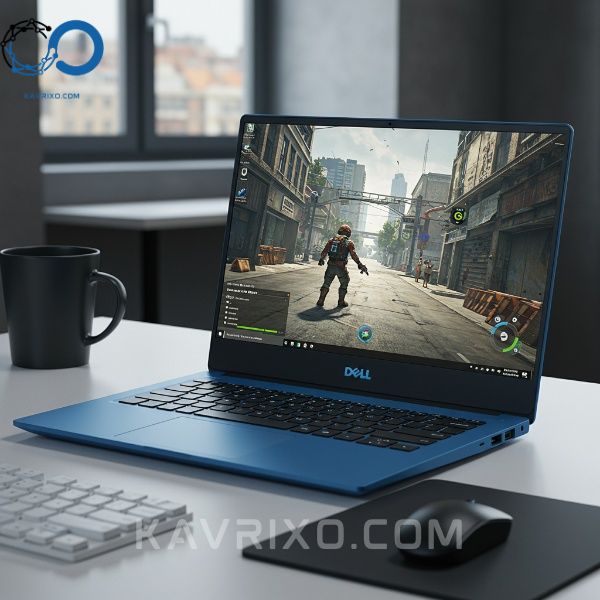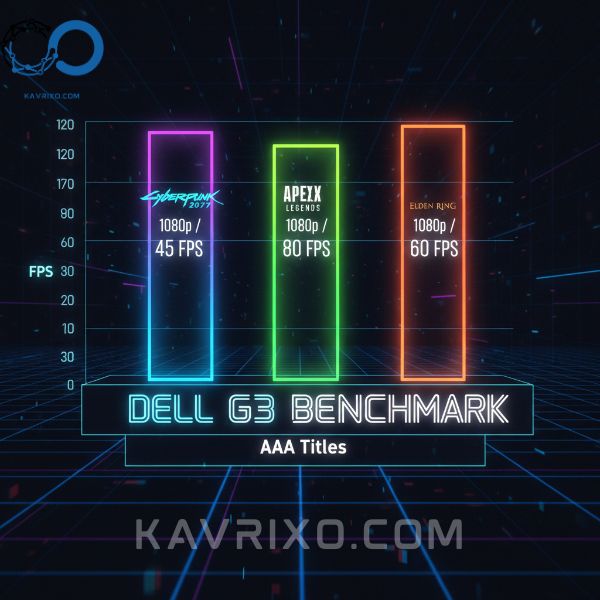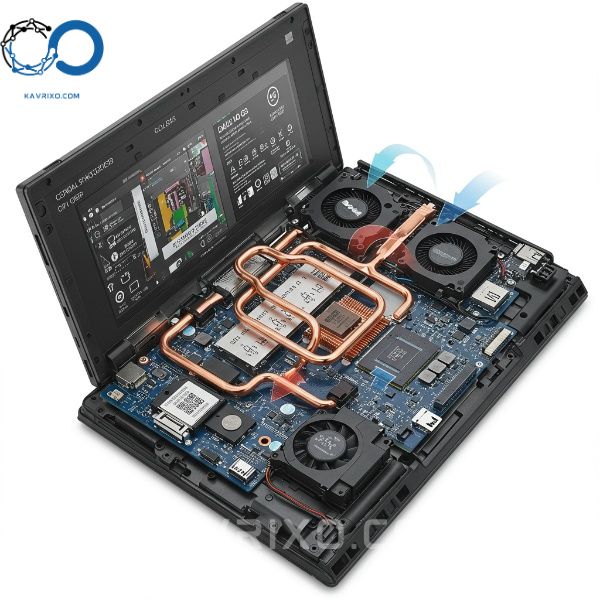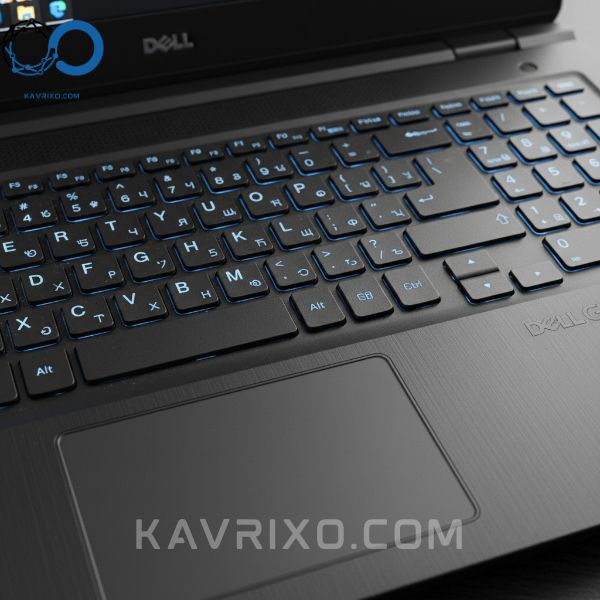The world of PC gaming is often seen as an exclusive club, requiring exorbitant investments in high-end hardware. Yet, over the last few years, companies like Dell have worked tirelessly to democratize the experience. Enter the Dell G3 gaming laptop—a machine consistently positioned as the entry point into serious portable gaming.
The G3 series has always occupied a fascinating niche: offering solid, current-generation components without the premium price tag associated with its XPS or Alienware cousins. But the market moves fast. What was cutting-edge two years ago might struggle today. This exhaustive, deep-dive review aims to answer the critical question for prospective buyers: Does the Dell G3 still stand up as a reliable, high-value affordable gaming machine in the current landscape? We’ll scrutinize everything from its often-criticized thermal management to its real-world gaming performance, helping you determine if this budget battlestation deserves your investment.
Contents
- 1 The G3 Legacy: A History of Affordable Power
- 2 Design and Build Quality: Form Follows Function
- 3 Performance Deep Dive: Specs and Real-World Gaming
- 4 Display and Multimedia Experience
- 5 The Elephant in the Room: Thermal Management
- 6 User Experience and Practicality
- 7 Value Proposition and Final Verdict
- 8 Conclusion: The Budget Battlestation Champion
The G3 Legacy: A History of Affordable Power
The Dell G series was born out of necessity. Dell recognized that not every gamer needed a $3,000 rig; many simply needed a dependable machine capable of running modern titles at respectable frame rates. The G3 models, specifically, focused heavily on stripping away unnecessary flash—like excessive RGB lighting or premium metal chassis—to prioritize core components: the CPU and GPU.
This philosophy has allowed the dell g3 gaming laptop to consistently undercut much of its competition. While the G5 and G7 models typically offer better cooling and slightly higher-tier specs, the G3 maintains its position as the ultimate budget gaming laptop compromise. It’s built for the student, the casual gamer, or the person who needs portability without sacrificing the ability to play AAA titles, even if it means tweaking settings down from ‘Ultra’ to ‘High.’ Understanding this heritage is key to setting appropriate expectations for the machine.

Design and Build Quality: Form Follows Function
When you first unbox the dell g3 gaming laptop, you immediately notice its departure from the sharp, aggressive aesthetics that define many gaming rivals. The G3 opts for a cleaner, more understated look. This isn’t a machine trying to scream “gamer”; it’s a machine designed to blend into a classroom or office environment, which is a significant selling point for many users.
Aesthetics: Understated Power
The chassis is predominantly plastic, which is necessary for maintaining a lower price point. While earlier iterations sometimes felt slightly cheap, recent generations of the G3 have improved the rigidity and finish. The angular lines are subtle, and the color options (often a deep black or a striking blue/white) are professional.
This reliance on plastic, however, has a double-edged effect. On one hand, it keeps the weight manageable for a 15-inch gaming machine. On the other, it can contribute to a feeling of flex, particularly in the screen hinge and keyboard deck, especially when compared to premium aluminum builds. For an entry-level gaming rig, this is an acceptable trade-off, but it requires users to handle the machine with reasonable care. Durability is decent, but not outstanding.
Connectivity and Port Selection
A major strength of the Dell G3 is its commitment to connectivity. Unlike ultra-thin competitors that sacrifice ports for profile, the G3 ensures you can connect almost anything you need without relying solely on dongles.
Standard configurations typically include:
- USB 3.2 Gen 1 ports (multiple)
- HDMI 2.0 (essential for outputting to high refresh rate monitors)
- Ethernet port (crucial for stable competitive gaming)
- Thunderbolt 3/USB-C (depending on the specific generation/config)
- SD Card Reader
- 3.5mm Headphone Jack
This robust port selection makes the dell g3 gaming laptop highly versatile, allowing it to function easily as a desktop replacement when docked.

Performance Deep Dive: Specs and Real-World Gaming
Performance is the bedrock of any gaming laptop review, and here, the G3 often punches above its weight class—provided you select the right configuration. The G3 is not defined by one set of specs; rather, it’s a spectrum of components ranging from adequate to genuinely powerful.
Processor and RAM Configurations
The heart of modern G3 models usually consists of Intel Core i5 or i7 processors (or their AMD Ryzen equivalents in certain markets). For gaming, the crucial distinction is often between the i5 and i7 models.
- Core i5 (H-series): Excellent for pure gaming performance, offering high clock speeds necessary for smooth frame rates. Paired with 16GB of RAM, this setup is the sweet spot for maximizing value.
- Core i7 (H-series): Better for multitasking, streaming, video editing, or heavy productivity work alongside gaming. While it offers marginal FPS gains, its real benefit is in overall system responsiveness.
We strongly recommend opting for at least 16GB of dual-channel RAM. While 8GB is common in base models, it severely bottlenecks modern gaming performance, especially when running background applications. If you buy an 8GB model, upgrading immediately should be factored into your total cost, unlocking significantly better G3 performance.
GPU Power: NVIDIA GTX/RTX Capabilities
The graphics card is the single most important component for a gaming machine. Historically, the G3 featured NVIDIA GTX 16-series cards. More recent iterations (especially the 3000-series models) have introduced lower-wattage RTX cards, such as the RTX 3050 or RTX 3050 Ti.
The inclusion of RTX technology is a game-changer for the dell g3 gaming laptop. Even the lower-tier RTX cards offer access to:
- DLSS (Deep Learning Super Sampling): This AI-driven upscaling technology allows the GPU to render games at a lower internal resolution and upscale them flawlessly. This can provide a massive 30-50% boost in frame rates in supported titles, effectively turning a modest GPU into a much more powerful one.
- Ray Tracing: While the G3 won’t run full Ray Tracing at 60 FPS in every title, having the capability adds future-proofing and enhances visual fidelity in certain games.
Benchmarking the Experience: FPS in AAA Titles
To truly gauge the G3’s capabilities, we must look at real-world benchmarks, assuming a configuration with an Intel Core i7 and an RTX 3050 Ti.
| Game Title | Resolution | Settings | DLSS | Average FPS | Assessment |
|---|---|---|---|---|---|
| Cyberpunk 2077 | 1080p | Medium/High | Quality | 45–55 FPS | Playable, solid experience. |
| Apex Legends | 1080p | High | N/A | 90–110 FPS | Excellent competitive performance. |
| Forza Horizon 5 | 1080p | High | N/A | 70–85 FPS | Smooth, immersive driving experience. |
| Elden Ring | 1080p | High | N/A | 55–60 FPS | Locked performance, ideal for RPGs. |
The takeaway is clear: the dell g3 gaming laptop is not designed to crush 4K gaming, nor is it meant to maintain 144 FPS in every AAA title. It is designed to hit the crucial 60 FPS threshold in virtually all modern games at high or medium settings, especially when leveraging DLSS. This makes it an incredibly strong contender for its price point.

Display and Multimedia Experience
Performance means little if the visuals are lackluster. The display is often where budget laptops cut the deepest corners, and the G3 is no exception—though recent generations have shown significant improvement.
Refresh Rates and Color Accuracy
Older G3 models were notorious for having somewhat dull displays with slow response times and poor color reproduction, often featuring only a 60Hz panel. However, the most current versions of the dell g3 gaming laptop typically feature 120Hz or 144Hz panels.
Why does refresh rate matter? For competitive games like Valorant or Fortnite, a 120Hz display (or higher) provides buttery smooth motion, giving you a critical advantage over standard 60Hz screens. If your G3 configuration includes an RTX card capable of pushing over 100 FPS, you absolutely need the high refresh rate panel to see those extra frames.
- Color Accuracy (Screen Quality): This remains the weakest area. The panels generally cover only about 60-70% of the sRGB gamut. This is perfectly fine for gaming and general use, but professional content creators (photographers, video editors) will find the colors washed out and inaccurate. They will likely need an external, color-calibrated monitor.
Audio Output: Speakers and Headphone Jack Quality
The G3 features dual speakers, usually tuned with Dell’s proprietary software enhancements. They are adequate for casual YouTube watching or background music. They lack the punch and bass depth of premium laptops.
However, most serious gamers utilize headphones, and the 3.5mm headphone jack on the dell g3 gaming laptop provides clean, powerful audio output. The real strength of the G3’s audio setup lies in its software control, which allows for fine-tuning based on game type (e.g., boosting footsteps in shooters).
The Elephant in the Room: Thermal Management
If there is one aspect that has historically plagued budget gaming machines, it is heat. Cramming powerful, high-wattage components into a thin plastic chassis requires masterful engineering, which is expensive. The Dell G3 gaming laptop is known to run warm, especially when pushed during extended gaming sessions.
Heat Dissipation Mechanisms
Dell has continually revised the cooling solution in the G3 series. Modern iterations typically feature:
- Dual fans
- Multiple heat pipes (often shared between the CPU and GPU)
- Larger vents above the keyboard and on the bottom chassis.
When idle or performing light tasks, the G3 is whisper-quiet and cool. When running games, however, temperatures can quickly climb into the high 80s or low 90s Celsius, particularly on the CPU. While these temperatures are technically within safe operating limits for modern Intel/AMD chips, they can lead to thermal throttling—the CPU or GPU intentionally slowing down its clock speed to prevent overheating.
To mitigate this, users often rely on two key strategies:
- G-Key/Game Shift: Dell often includes a ‘G-Key’ or ‘Game Shift’ function that instantly maxes out the fans. This significantly improves thermal management and reduces throttling, though it results in a substantial increase in fan noise.
- External Cooling Pad: For hardcore gamers, an external cooling pad is highly recommended. Elevating the laptop and providing additional cool air intake can drop temperatures by 5-10 degrees Celsius, ensuring sustained peak G3 performance.

Noise Levels Under Load
The relationship between temperature and fan noise is inverse: the cooler you want the laptop, the louder the fans will be.
When the ‘Game Shift’ feature is activated, the dell g3 gaming laptop sounds like a small vacuum cleaner. This is standard for most budget gaming laptops where thinness is prioritized over silent operation. If you plan on using this machine for serious gaming, high-quality noise-canceling headphones are virtually mandatory to drown out the fan whine.
User Experience and Practicality
Beyond raw performance, a laptop must be pleasant to use day-to-day. The G3’s user experience covers everything from typing essays to carrying it between classes.
Keyboard Comfort and Responsiveness
The G3 features a full-sized keyboard, including a numeric keypad—a benefit for productivity and certain strategy games. The key travel is decent, offering a satisfying tactile bump. It’s not a mechanical keyboard experience, but it’s certainly comfortable for long typing sessions.
The keyboard usually includes backlighting (often blue or white, sometimes customizable RGB depending on the model). The backlighting is essential for late-night gaming sessions and provides a touch of flair to the affordable gaming machine.
The trackpad, however, is average. It’s responsive enough for basic navigation, but its plastic surface lacks the smoothness of glass trackpads found on higher-end machines. Any serious gamer will be using an external mouse 99% of the time, so this is a minor fault.

Portability and Chassis Size
The dell g3 gaming laptop is a 15-inch machine that sits firmly in the middle ground regarding size. It’s certainly portable, fitting easily into most standard backpacks, but it’s not ultra-slim like an ultrabook.
Its weight, typically hovering around 5.5 lbs (2.5 kg), plus the heft of the power brick, means you will definitely notice it in your bag. This is the weight required to house the cooling apparatus and the higher-powered components. For a traveler who needs a serious gaming capability, this is a necessary compromise on portability.
Battery Life Expectations
This is the area where the G3, like virtually all gaming laptops, struggles. When not gaming, and performing light tasks (browsing, word processing) with screen brightness dimmed, you can expect around 3 to 4 hours of battery life.
However, the moment you launch a graphically intensive game, battery life plummets. Gaming on battery power is generally discouraged not only because the battery drains in under an hour but also because the laptop automatically throttles performance heavily to conserve power. To achieve peak G3 performance, you must be plugged into the wall. Consider the G3 a desktop replacement that can be moved, rather than a truly mobile device.
Value Proposition and Final Verdict
Ultimately, the success of the dell g3 gaming laptop is measured by its value proposition: what do you get for the price?
Competition Comparison
The G3 competes directly with other entry-level contenders like the Acer Nitro, HP Victus, and Lenovo Legion 5 (which is often slightly pricier but offers superior cooling). The G3 typically wins on price when comparing similarly specced GPUs.
Where the G3 sometimes falls short is in consistency. The cooling system isn’t as refined as the Legion 5, and the display quality isn’t as vibrant as some of its competitors. However, the G3’s consistent availability and Dell’s strong service network make it a reliable, low-risk purchase. It often represents the cheapest way to access an RTX-enabled gaming laptop, making it a compelling choice for budget-conscious gamers relying heavily on DLSS.
Pros and Cons Summary
| Pros | Cons |
|---|---|
| Excellent price-to-performance ratio | Thermal throttling under heavy, sustained load |
| RTX/DLSS capability in recent models | Substantial fan noise when under pressure |
| Robust port selection (including Ethernet) | Below-average color accuracy on the screen |
| Understated, professional aesthetic | Chassis is mostly plastic, leading to some flex |
| Strong Dell warranty and support | Mediocre battery life during tasks |
Conclusion: The Budget Battlestation Champion
The Dell G3 gaming laptop isn’t perfect. It is noisy when pushed, it can run hot, and its plastic chassis won’t win any design awards against premium rivals. But perfection is not the goal here. The goal is accessibility, and in that regard, the G3 is a resounding success.
For the gamer who needs a machine that can reliably handle the biggest releases of 2025 and beyond, but cannot justify spending $1,500+, the G3 provides an essential gateway. By prioritizing the core components—a powerful H-series CPU and an RTX GPU—Dell has created a truly viable affordable gaming machine.
If you can secure a configuration with at least 16GB of RAM and a high refresh rate screen (120Hz or 144Hz), the Dell G3 remains an excellent, trustworthy, and persuasive option. Just remember to invest in a good pair of headphones and potentially a cooling pad, and this budget battlestation will serve you well for years to come.


Pingback: The Definitive Guide to Finding the Best Laptop Brand in 2025: An Expert Breakdown - Kavrixo Blog